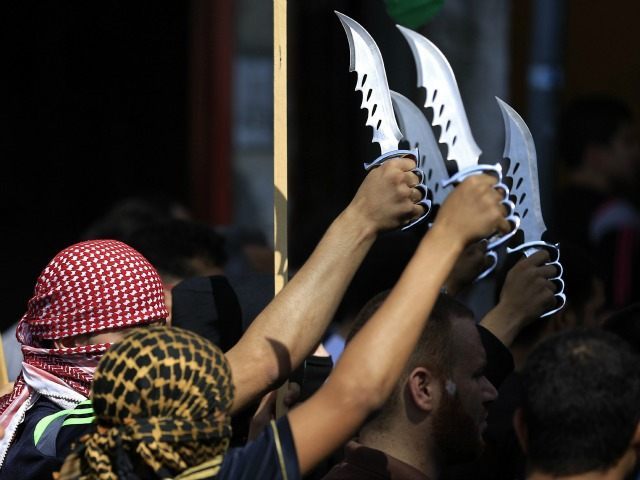skip to main |
skip to sidebar

(NYP) This week began as the last one ended — with more Palestinian stabbing attacks against Israeli Jews, and more dead. And yet, this information might surprise readers of The New York Times.
On Sunday, a 20-year-old Israeli woman was stabbed to death, another Israeli was rammed by a car and attacked with a knife and a third was assaulted by a knife-wielding teen affiliated with the Islamic Jihad terror group.
All three assailants were killed in the course of their attacks.
But the headline to the Times’ story about Sunday’s attacks did away with cause and effect, muddled victim and aggressor: “1 Israeli, 3 Palestinians Killed in Attacks in West Bank.” The online headline was later changed, but the print headline Monday morning was equally obtuse: “West Bank Faces Spate of Assaults That Kill 4.” The “West Bank” faced nothing. It was Israelis who faced assaults.
This was par for the course — and in some ways, even mild — for how the Times has covered the so-called “stabbing intifada,” the recent spate of Arab-on-Jewish murder.
Palestinian Authority President Mahmoud Abbas recently called on his people to protect Jerusalem holy sites from the “filthy feet” of Israeli Jews, and terrorists have heeded the call, taking to the streets to thrust knives into any Israeli they encounter — other recent stabbing victims include an 80-year-old woman and a 13-year-old boy on a bike.
But even this incitement, and even this terror, is no match for the creativity of The New York Times. When a Palestinian assailant was caught on film last month wielding a knife and rushing at Israelis, before quickly being neutralized by Israeli security personnel, Times reporters simply avoided telling readers about the video.
And instead of mentioning this incriminating piece of evidence, they repeatedly cited false Palestinian allegations that Israelis planted the knife next to the “innocent” attacker. Creatively, and unethically, they turned an empirical fact into an unknowable case of police vs. “witness.”
When Israel released a photo of the butterfly knife held by the attacker, the Times’ bureau chief in Jerusalem absurdly called it a “Boy Scout” knife. Again, it was a masterstroke of creativity. Butterfly knives are infamous for being flipped back and forth by ’80s movie villains, and are illegal in several US states and in countries around the world. To confuse a butterfly knife with a Boy Scout knife is to confuse nunchucks with a nun’s ruler.
Similarly, after Palestinians stoned a Jewish car, resulting in the death of the driver, a reporter insisted they weren’t attacking the Israeli but merely pelting “the road he was driving on.” The death, reporters insisted, was an “accident.” Attacking the asphalt? A Boy Scout knife? Such verbal ingenuity might be commendable in creative writing. In journalism, it’s an embarrassment.
And so was the newspaper’s recent suggestion that there might never have been a temple on Jerusalem’s Temple Mount, despite unanimity among serious scholars to the contrary. The timing of this attack on Jewish history was no coincidence. Palestinians have explained that the wave of violence is fueled by rumors that Israel plans to change the status quo on the Mount, and by continued Jewish visits to the site.
Instead of explaining the historical connection between the Jewish people and their holiest site, the newspaper chose to rewrite history to better fit with a Palestinian narrative that Jews are foreign to the Temple Mount. (This article and the one about the Boy Scout knife were eventually corrected.)
The newspaper has long been criticized for its obsessive scrutiny of Israeli flaws, real and imagined, coupled with soft-glove treatment of Palestinians. Even its own public editor has urged reporters to strengthen coverage of Palestinians because, she incredibly had to remind colleagues, “They are more than just victims.” Clearly, the message hasn’t been heeded.
This journalism-gone-wild isn’t good for Israel, of course. But it’s also bad for the newspaper’s readers, who want an honest account of what’s happening across the world. It’s bad for students, who risk harassment and ostracism on campus if they come out in support for the Jewish state. And if our democracy, and by extension our foreign policy, depends on a well-informed electorate, it’s bad for us all.



